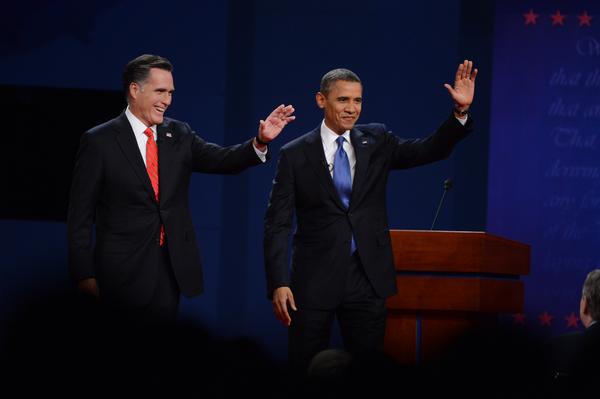Save 50% on a 3-month Digiday+ membership. Ends Dec 5.

It might seem like the election season will last forever, but the selling will take a break once election night, Nov. 6, rolls around. If only brands were so lucky.
P&G CMO Marc Pritchard believes the world of real-time marketing is “democracy on steroids,” challenging brands to connect with voters (consumers) day in day out. Voting takes place pretty much all the time.
“We have never had a greater opportunity to connect with people,” he said in his keynote address at the ANA Masters of Marketing meeting in Orlando, Fla. “For us, the voting booth is the store, and the election takes place every day, and people judge us on performance and what we say in our commercials.”
Like all good politicians, P&G wants to break through by establishing trust. P&G uses listening mechanisms both on social media and all over the Web, to develop products based on what consumers want. This is the company’s way of doing good for people. Then, it communicates that superiority through marketing to give proof of performance.
Pritchard pointed to his company’s Olympics campaign as a signpost for where the mega-brand is heading. It celebrates, not only the Olympic athletes but the moms behind them. Integration was key. Commercials, online videos and social media content was used to tell the stories of these moms and their dedication. People don’t forget these types of commercials. It gives them insight into who P&G is on a human level.
Like any campaign worth its salt, P&G sweats the numbers. Rather than microtargeting specific slices of the electorate with finely tuned messages, P&G hires researchers and scientists to think about consumers’ lives and figure out what people really want. For example, for the Pampers brand, P&G conducted research to figure out what parents want most from their kids’ diapers. It was found that parents want diapers that were going to absorb well, allowing that their kids sleep through the night. Pampers invested millions to develop diapers that met these expectations. Then, it focused on creating advertising to show how the new Pampers make for peaceful nights and playful days. Strategy first, then tactics, advised Pritchard.
“Our time-tested business model was founded on insight,” Pritchard said. “Insight creates innovation and creativity. This essential element is ignored all the time, when it is the key to win consumers at the ‘polls.’”
Ad position: web_incontent_pos1
Pritchard’s next piece of advice was: Start with the truth and show your human side. We all remember the ads from back in the ’80s for Pantene Pro-V. Remember? “Don’t hate me because I’m beautiful.” This was one of the most successful campaigns in the brand’s history because it focused on truth. It took a supermodel whom everyone new and loved and had her tell women the truth: that she, too, was frustrated by the condition of her hair after all that she’d done with it. The ad then went on to talk about how Pantene penetrates your hair and rebuilds it. Pantene Pro-V went from a $70 million brand to a $200 million brand in the U.S., in under a decade because of this ad.
Then, one day, for some strange reason, Pantene changed the message. It began talking about “4 o-clock flop” and “second-day hair.” Consumers could not relate. No one even knew what Pantene meant. Digging into the data, Pantene found that consumers did not get it and so it went back to its original campaign and revitalized it. It got Eve Mendez to be honest and talk about all the horrid things she does to her hair: dyes, relaxers, coloring, hot irons and so on. This, women could relate to. This was honesty and consumers appreciated it. And Pantene made it clear that it wanted to do good and help these women fix their intolerable, damaged hair.
“Social media is the world’s focus group,” Prichard said. “Platforms like Twitter are an always-on, real-time conversation. We listen more than we talk in social media.“
That brought Pritchard to Tide, which created a fast-response team within the brand. It’s like an always-on newsroom. The team monitors everything going on the Web and finds the right moments to insert the Tide brand.
The social Web is even helping P&G brands shift the way they approach TV ads, as well. The company is crowdsourcing commercials in real time, reflecting how people really live their lives. It then seeds these videos into social media to see how people react.
Ad position: web_incontent_pos2
“Don’t be afraid to show your human side,” Pritchard said. “Connecting with consumers on a human level is a powerful persuasion. Human insight is behind that moment of recognition when you see great art or you think, ‘I know how that feels; that’s my life.’”
More in Marketing

Ulta, Best Buy and Adidas dominate AI holiday shopping mentions
The brands that are seeing the biggest boost from this shift in consumer behavior are some of the biggest retailers.

U.K. retailer Boots leads brand efforts to invest in ad creative’s data layer
For media dollars to make an impact, brands need ad creative that actually hits. More CMOs are investing in pre- and post-flight measurement.

‘AI is permeating everything we do’: How Guitar Center developed 2 AI tools this year
This summer, the company launched a chatbot called Rig Advisor to help customers find the right instruments and products.
Ad position: web_bfu